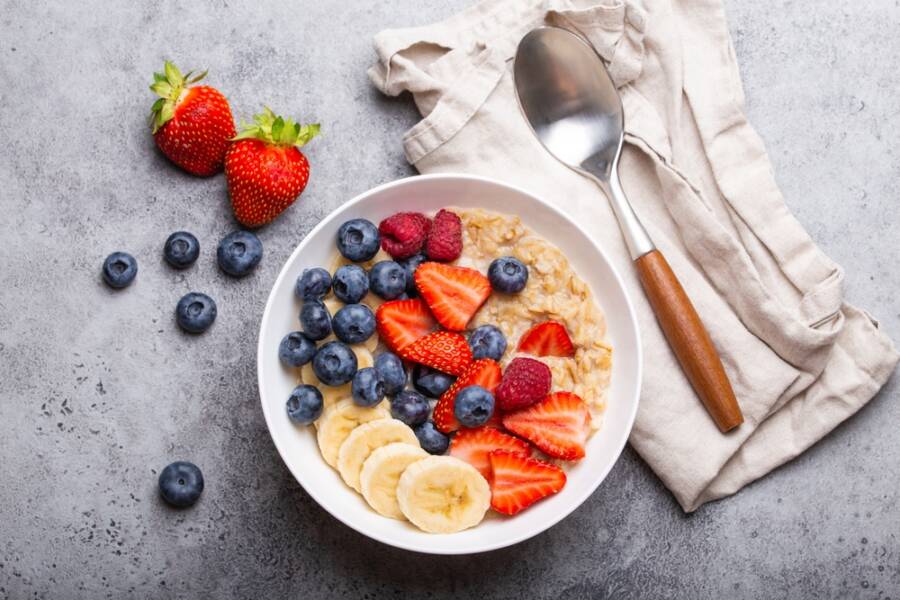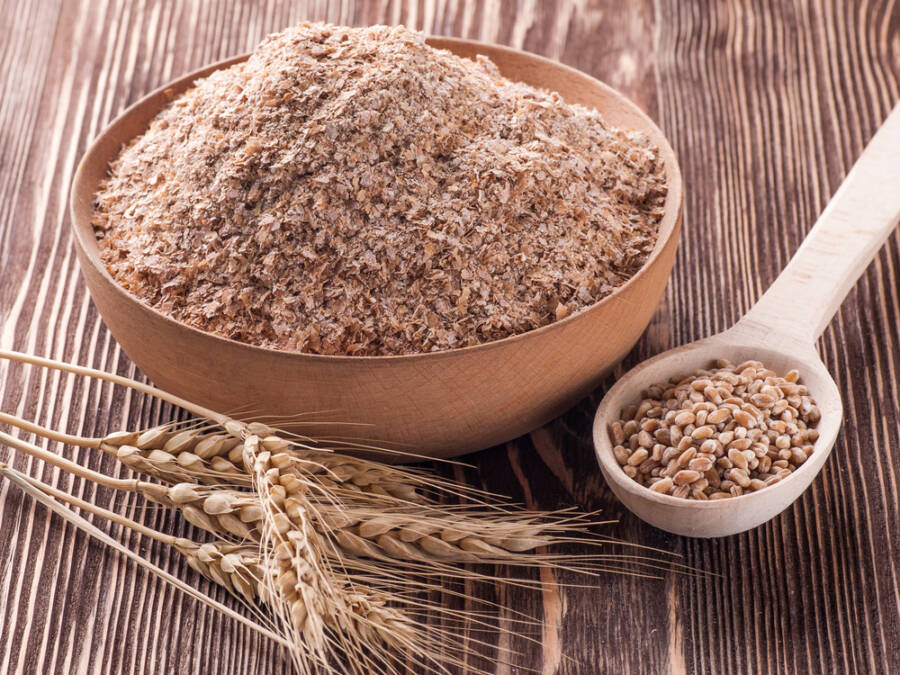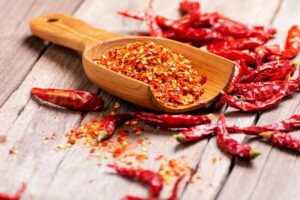Here’s something you probably didn’t know: there are plenty of types of breakfast cereals that have fast-digesting carbohydrates. These cereals generally have a high glycemic index (GI), which basically means your body breaks them more rapidly, causing your blood sugar levels to rise quite fast.
If you suffer from diabetes, this could lead to hyperglycemia (high blood sugar), which could represent a threat to your overall health. Luckily, not all cereals are the same. If you suffer from diabetes, you can definitely enjoy some types of cereal. That’s why we think you’d probably need a list with specific recommendations for someone who suffers from diabetes, so there you go:

Here is some basic info about the glycemic index
The glycemic index is a system that measures how rapidly the carbs you eat raise your blood sugar levels. As a general rule, foods are classified as low, medium, or even high glycemic on a scale of 0-100. The low ones are in between 0-55, the medium ones in between 56-69, and the high ones in between 70-100.
The best thing you can do is choose low-GI cereals, especially if you have diabetes. That happens because your body digests them slowly and then they get easily absorbed into your bloodstream more gradually. This can also help regulate insulin release and prevent spikes in your blood sugar.
There are also a bunch of other factors, like cooking time, acidity, and food combinations, that could potentially influence your food’s GI. For instance, there’s an interesting 2018 study conducted on Indian males that showed how eating breakfast cereals with milk can help lower the glycemic response, especially because milk has quite a high protein-to-carbohydrate ratio.
What’s a glycemic load?
Glycemic load (GL) is yet another effective measure of how food can affect your blood sugar. It generally takes into account the GI of a bunch of different foods, but also the portion size of carbohydrates that are consumed. Therefore, the GL might be a much better way to identify what are the best carbohydrate choices for you. Some foods might have a high GI but a low GL, which would then make them healthy options for people with diabetes.
Cornflakes
As a general rule, cornflakes have a high GI of 89 and a GL of 20 for a 1-cup serving. The main ingredient is milled corn, which has a much higher GI than other whole-grain alternatives. Milling can easily remove the hard outer layer of the corn.
This also leaves behind a specific kind of starchy product that has little nutritional value and plenty of rapidly digestible carbohydrates. The most popular brand out there is Kellogg’s Corn Flakes. It’s advised to buy plain cornflakes rather than sugarcoated or even honey and nut varieties. These could eventually spike your blood sugar levels much faster.
Grape-nuts
Grape-nuts is a well-known brand of round-kernel breakfast cereal made from whole-grain wheat flour and malted barley. These cereals also have a GI of 75 and a GL of 16 per 30-gram (g) serving. Grape-Nuts cereals are a wonderful source of vitamins B6 and B12, folic acid, and fiber, which provides 7 g per 1/2 cup serving. Fiber is a fairly important part of diabetes management, as it can help you slow your digestion, stabilize and manage your blood sugar levels, maintain a healthy digestive system, and feel full.
Rice-based cereals
Rice-based cereals, like Kellogg’s Special K, could potentially affect your blood sugar levels a bit less than Grape-Nuts. Special K cereal sold in the United States has a GI of 69 and a GL of 14 per serving of 30 g. There are plenty of varieties of Special K, which can differ in their calorie content and nutritional values. They also include Red Berries, Fruit & Yogurt, Multigrain, and Oats & Honey.
Cream of Wheat
Cream of Wheat is a specific type of breakfast porridge made entirely from farina, a finely ground whole-grain wheat. It has quite a smooth texture and subtle flavor. Malt-O-Meal is yet another popular brand of farina porridge. A 250-g serving of regular Cream of Wheat has a GI of 66 and a GL of 17. The instant version also has a higher GI of 74 and a GL of 22.
Muesli
Sugar-free muesli has a GI of 57. It is mainly made of raw, rolled oats and other ingredients, like dried fruits, seeds, and nuts. Some reputable brands include Alpen Original Muesli, Bob’s Red Mill, and Familia Swiss Muesli Cereal. With its base completely made of oats, muesli is a wonderful source of fiber.
Oatmeal
Oatmeal is by far one of the healthiest cereal options, coming in at a GI of 55. Oatmeal is entirely made from raw oats. You can easily opt for specialty, organic, and popular fortified brands like Quaker. But you should consider avoiding instant oats because they have a GI rating of 79 and might have as much as twice the GL of regular oats. It’s also advised to avoid the sweetened varieties, as they contain added sugars and extra calories.

Wheat bran cereals
Wheat bran cereals, like Kellogg’s All-Bran and Post 100% Bran are both winners when it comes to having the lowest GI and GL ratings. On average, they have a GI of 45 and a GL of 10 per 1-cup serving. A 2016 review of 64 publications discovered that eating whole-bran breakfast cereals 2-6 times per week could help lower the risk of developing type 2 diabetes. The wheat bran in breakfast cereals is also processed into flakes and pellets. These cereals are heavier than rice-based cereals thanks to their high fiber content. Wheat bran cereal is also quite rich in thiamine, iron, zinc, magnesium, folic acid, and vitamin B12.
Other alternatives
There are plenty of other breakfast foods that are quite good to eat if you suffer from diabetes, like eggs, plain Greek yogurt, low carb smoothies, avocado on multigrain toast, and cottage cheese with fruits and nuts. It’s also advised to be mindful when you choose certain beverages, especially fruit juices because they have higher GI ratings than whole fruits.
Are Cheerios good for diabetics?
Cheerios also have a GI rating of 74, which classifies it as a high-GI breakfast cereal. Someone with diabetes should consider other cereal options instead, like wheat bran cereals such as Kellogg’s All-Bran and Post 100% Bran.
What cereals can I eat if I have diabetes?
The best kinds of cereals you can have if you suffer from diabetes are generally those with a low-to-medium GI. It’s also advised to eat cereal made from whole grains rather than refined grains. Some wonderful options might include wheat bran cereals, regular oatmeal, and muesli.
Takeaway
We can’t emphasize enough how important it is to integrate a balanced breakfast into your routine if you have diabetes. Prioritizing your blood sugar and managing your hunger throughout the day should become your top priorities as you tackle this condition.
Some breakfast cereals might be good options. It’s also best to choose the ones with a low GI, especially since they get absorbed more slowly into your bloodstream and are less likely to cause a rapid blood sugar spike. It’s also advised to avoid the ones that are completely made from refined grains, that have added sugar, and are low in fiber.
If you found this article useful, there’s more to check on our website: Top 14 Healthiest Store-Bought Condiments for Americans







